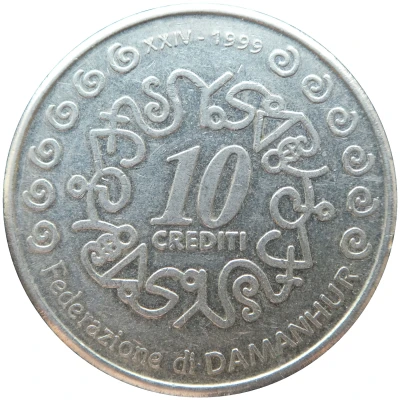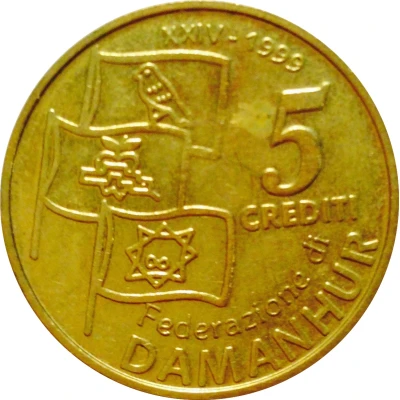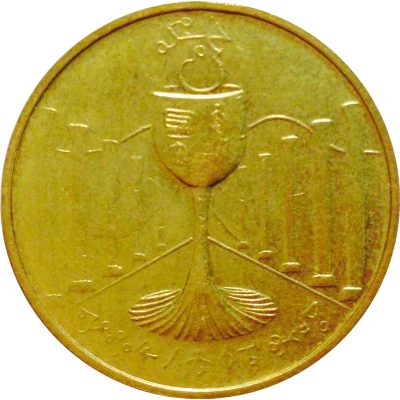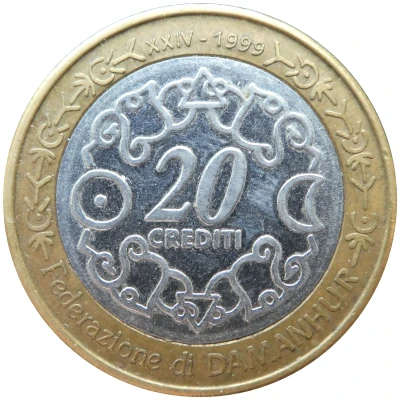


© Edo Timmermans (CC BY-NC-SA)
Token - 10 Crediti
| (Probably the material is copper-nickel, see Comments) | 9.6 g | 27.1 mm |
| Location | Federation of Damanhur |
|---|---|
| Type | Trade tokens › Work encampment, mine and wage tokens |
| Years | 1999-2002 |
| Value | 10 Crediti |
| Composition | (Probably the material is copper-nickel, see Comments) |
| Weight | 9.6 g |
| Diameter | 27.1 mm |
| Thickness | 2.1 mm |
| Shape | Round |
| Technique | Milled |
| Orientation | Medal alignment ↑↑ |
| Updated | 2024-11-13 |
| Numista | N#374920 |
|---|---|
| Rarity index | 100% |
Reverse
A scarcely dressed lady moving/dancing with some spiritual meaning, with behind her a field with menhir like erected stones. This is surrounded with text, 8 clockwise spirals and 8 anti-clockwise spirals, all engraved.
Script: Latin
Lettering:
TE TUJL
DAMANHUR
Translation: No website on Damanhur reveils what 'te tujl' means.
Edge
Plain
Comment
People living in and doing paid work for the Damanhur community get paid in Crediti. The value of 1 Credito equals 1 Euro. The coins are used within the community as money, one can pay with either Euros or Crediti in all the shops and restaurants.The coin on the pictures comes out of a coin machine in the hallway leading to the Damanhur supermarket that changes 50 Euro banknotes to five 10 Crediti coins.
Probably the material is copper-nickel (which is magnetic). The webpage www.taedivm.org/damanhur1.html lists both the 10 crediti and the 20 crediti cores as made of nickel-silver. This source may not be reliable though, as the 10 crediti coins are non-magnetic, while the 20 crediti cores are magnetic (personal observation).



